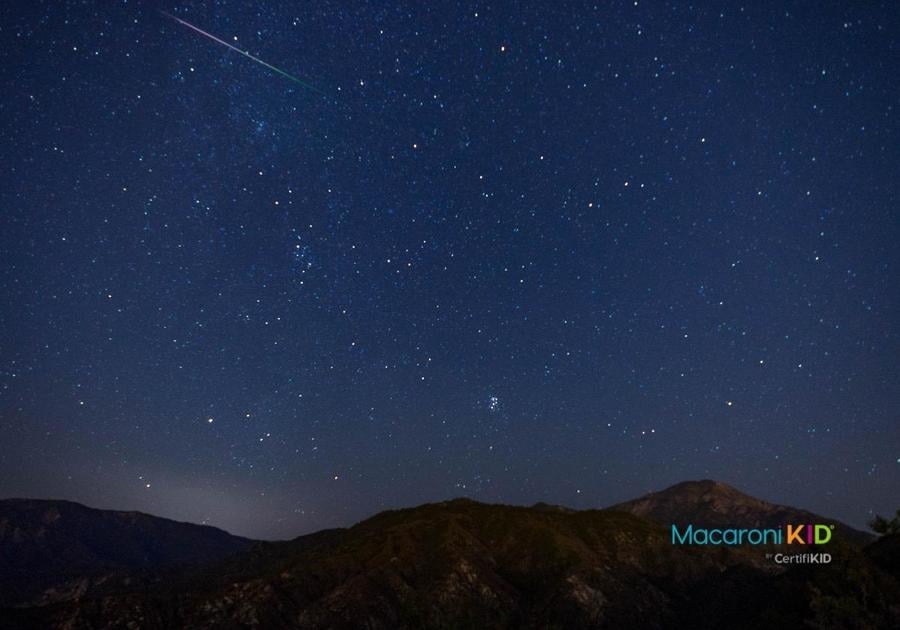Living close to city lights makes it harder to see what's in the sky after dark. But this time of year is always an exception because of the Perseid meteor shower!
The Perseids can be seen every year from mid-July through late-August. Typically, the Perseid meteor shower peaks around August 13, making the weekend of Aug 12-13, 2023, the best time to try to see the show!
Because the moon will be only 13% illuminated, the sky will be dark enough to see the meteors beautifully (barring extra clouds or lights in the area). If you recall, in 2022, August's full Sturgeon Moon made it quite difficult to see the starts due to the natural brightness in the sky from the moon.
Fun facts about the Perseid meteor showers
If you have curious kids like mine, they'll want to know exactly what they're looking at and will have a lot of questions. Impress your kids with your vast knowledge of the universe with these fun facts:
- The Perseids are caused by a giant comet 109P/Swift-Tuttle, which left a wide stream of debris in its wake. Earth is passing through that debris. But don't worry – they're small pieces, each about the size of a grain of sand, so they won't hurt us.
- The Perseid meteoroids travel at 133,200 mph once they hit Earth's atmosphere and can reach more than 3,000° F!
- Mid-August is the peak of the Perseids because we will be passing through the densest portion of the debris.
- We see the "shooting stars" (that aren't really stars) when the tiny pieces of dirt and dust hit our atmosphere at a high speed and make a flash of light when they burn up.
- During most nights of the Perseids, you might be lucky enough to see a dozen or two meteors an hour. But during the peak nights, you can expect to see 50-70 per hour, depending on how dark it is around you!
- It's called the Perseid meteor shower because the meteors look like they are coming from the constellation Perseus.
 photocluster via Canva |
How to see the free show in Fort Myers - Fort Myers Beach
Where do you look for these little falling balls of light? The best way to view the Perseids is when the sky is clear, dark, and you're away from a lot of light. So head inland to rural areas or to the beach. Grab a blanket (lying down gives you the widest view of the sky) and snacks, then find a safe place to watch and have a blast making memories with your kids.
The really cool part is you don't need special equipment to see the Perseid meteor showers. In fact, it's easier to view it with your naked eye than through the limited lens of a telescope or binoculars. It is recommended that you try to adjust your eyes to the dark at least 20-30 minutes before your viewing time, to ensure the Perseids stick out more clearly to you!
Here is an interactive map showing where you can expect to see the Perseids at their peak, the morning of August 13, 2023, before the sun rises.
Peak viewing on 8/12/23 is between 9:43pm ET and sunrise on 8/13/23 (around 6:31am ET), with exact peak time around 4am ET.
To get a real-time idea of where you should look in the sky for the Perseids, using theskylive.com's live 109p-tracker.
Bonus: Venus, Mars, Jupiter, and Saturn can all be seen during August. You can read more about spotting them at www.astronomy.com.
Want to know more? You can find out more about the Perseid meteor shower and all kinds of other cool things about space at in-the-sky.org, spaceweather.com, www.space.com, and www.astronomy.com.



